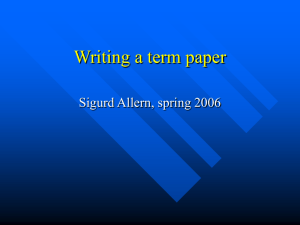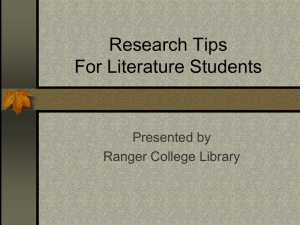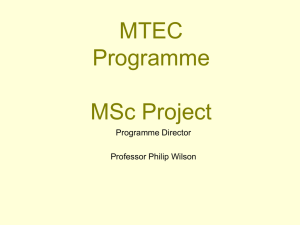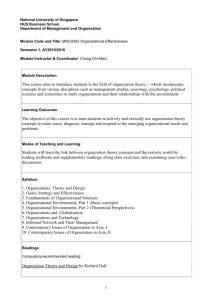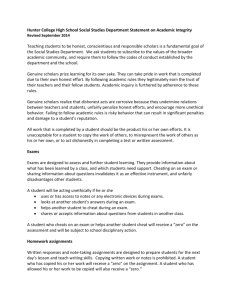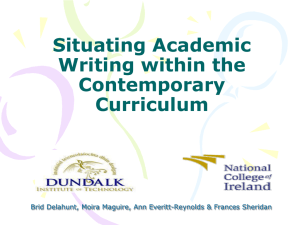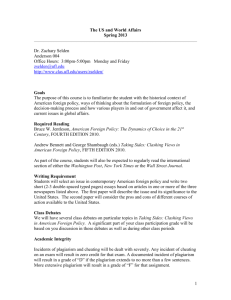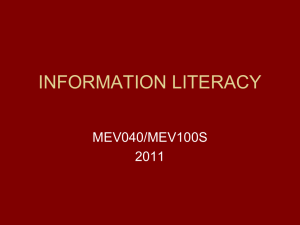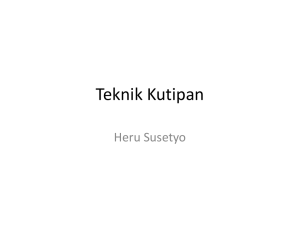The legal implications of using and editing graphical images.
advertisement
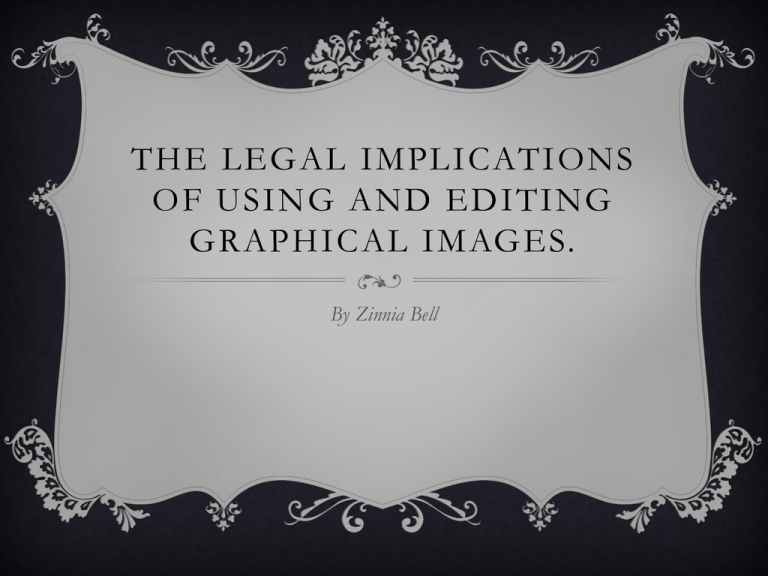
THE LEGAL IMPLICATIONS OF USING AND EDITING GRAPHICAL IMAGES. By Zinnia Bell WHAT IS COPYRIGHT? Copyright is a legal concept, when a person creates a type of media which is a form of information I.e images, software and books. It gives the creator of an original work exclusive rights to it, usually for a limited time only. As the author of the work you have the right to do any of the following or allow others to do any of the following: Make copies of your work; Distribute copies of your work; Perform your work publicly (such as for plays, film, dances or music); Display your work publicly (such as for artwork, or stills from audio-visual works, or any material used on the Internet or television) Make “derivative works” (including making modifications, adaptations or other new uses of a work, or translating the work to another media). Should someone do any of these without permission then the copyright holder has the right to fine or take to court the perpetrator. PLAGIARISM Plagiarism is when I person breaks copyright and takes an image or other works and passes the work off as their own, along with using another persons production without crediting the support sources. Plagiarism is considered academic dishonesty and a breach of journalistic ethics. It is subject to sanctions like expulsion. Plagiarism is not a crime per se but in academia and industry it is a serious ethical offense, and cases of plagiarism can constitute copyright infringement. COPYRIGHT FREE Copyright free is when an image may be used by anyone, they can usually be found on web pages i.e. Google Images. Some images are not necessarily recognised as copyright free and so the person who is interested in using the image should gain permission from the owner before using the image. As it may turn out that the image is copyrighted.. OBTAINING COPYRIGHT Evidence is needed to ensure that the piece of work is your own in order to ensure that the piece is guaranteed to be protected by copyright. If the work is found to be copied off of the internet or of another person (plagiarism) then the work will not be able to be copyrighted. If the piece of work is a joint piece of work with someone then agreements have to be made on what rights each person has. LENGTH OF COPYRIGHT With photographs the copyright may last for 70 years after the death of the photographer. Although if they are subject to something called Crown copyright then it will last for a maximum of 125 years. Or if it is subject to Parliamentary copyright it applies for 50 years from the taking of the photograph. Typographic arrangements are protected for 25 years after the end of the year in which the edition was first published. Copyright usually lasts for 70 years after the death year of a known author. However for unknown authors it expires 70 years from the end of the calendar year in which the work was first made available to the public. If a work is produced by two or more authors then the copyright lasts for 70 years after the death of the last of the authors to die. THE LEGAL IMPLICATIONS If a copyrighted image is used or manipulated without the owners permission then they have the right to take you to court. This includes making copies of the image, manipulation and other uses. Copyright does not necessarily apply to my images as I have sourced them from the Academy Website, and so for the use in projects and school use they would be copyright free. Copyright may apply for my logo as I sourced the boarder from Google, and so in the process I had to obtain permission in order to use it. BIBLIOGRAPHY http://www.copyrightkids.org/whatcopyframes.htm http://en.wikipedia.org/wiki/Copyright http://www.ipo.gov.uk/types/copy/c-about/c-about-faq/c-about-faq-whatis.htm http://www.ipo.gov.uk/types/copy/c-manage.htm http://www.ipo.gov.uk/types/copy/c-manage/c-useenforce.htm http://www.ipo.gov.uk/types/copy/c-manage/c-ownerorg.htm http://iictblog.wordpress.com/2011/06/07/legal-implications-of-using-and-editing-graphic-images/ http://uk.answers.yahoo.com/question/index?qid=20130418021643AAWuDvR http://en.wikipedia.org/wiki/Plagiarism http://www.ljmu.ac.uk/lea/78088.htm


